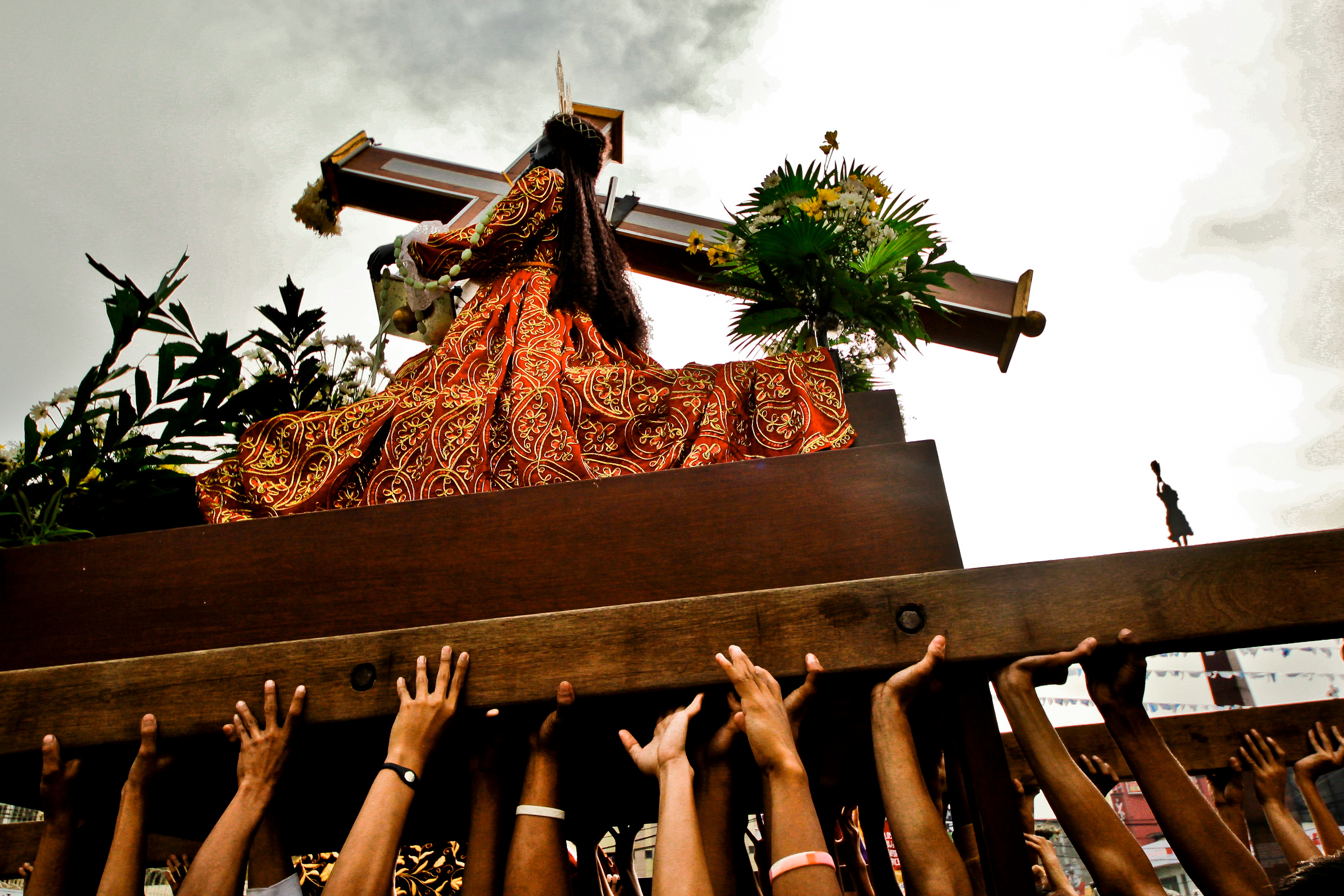Millions of Filipinos congregate in Manila on January 9 for the Black Nazarene procession, or Poong itim na Nazareno, according to press accounts that put the number at up to 10 million. A life-sized statue of a dark-skinned Jesus Christ carrying the Cross is known as the Black Nazarene or Hesus Nazareno. The Minor Basilica of the Black Nazarene in Manila is the statue’s owner. The Black Nazarene statue is carried through the Quiapo neighborhood to go to the Quiapo Church. As a result, the festival is also known as Quiapo Fiesta.
Three times a year, the Black Nazarene figure is taken from the shrine for public adoration. It is brought out on January 1 to start a novena leading up to the feast on January 9. It is also venerated publicly on Good Friday, the day most frequently connected with Jesus bearing the Cross. However, the feast on January 9 is when the statue is most commonly seen and touched. The procession through the streets produces a religious frenzy unsurpassed by any other religious event in the nation, and the event is broadcast live on television.
It would be best if you arrived the day before in the evening because the walks begin after the midnight mass. The figure of Jesus is covered in a maroon and yellow garment, so people search for clothing in those hues. Devotees walk barefoot to demonstrate empathy and emulate Christ’s journey to Golgotha. The parade is lovely and motivating as a whole. The methods that Christianity reaches individuals worldwide will fascinate anyone curious about learning more about a distinctive cultural phenomenon!
In preparation for the procession, participants, primarily young people, congregated in Rizal Park for a vigil. Devotees queue up at the grandstand for the pahalik, or “kiss,” when they get the chance to kiss or touch the Cross or foot of the Black Nazarene. They frequently use a cloth they save for massaging themselves or giving to family members who cannot visit the Nazarene to clean the Cross or foot. It is thought that touching the fabric may heal you physically. Many organizations or families bring replicas of the Nazarene statue and other statues, some of which are huge. These command the same reverence as the prominent Nazarene statue carried in the procession and are frequently cleaned with a cloth.
Stage performances, singing, and dancing are all present at the vigil. Inspiring sermons by priests and bishops inspire sinners and drifters, especially young people, to abandon vices, including smoking, drug use, excessive drinking, and premarital sex, to become devoted disciples of Christ. Youth are encouraged to participate in apostolic-religious activities, including learning, sharing the gospel with others, and feeding the homeless. Many similar acts are carried out during the vigil far into the night. Participants perform and watch theatrical productions in the early morning while dancing and singing religious and uplifting music.
The vigil parade’s ritual mirrors the Filipino people’s struggles and endurance via its attributes of pain, patience, and passion. Even while followers bring their problems and sufferings to the Nazarene, the festivities are a very community kind of devotional instead of an individualized one. The monument is open to Filipino visitors all year, but a procession is on numerous occasions. The vigil and march are marked by patience and urgency, taking things directly to Jesus as he interacted with them while still dressing in their manner. People from the Philippines are tolerant, patient, and forgiving. They can withstand much abuse and suffering, as Jesus did during his torture and death on the Cross.

